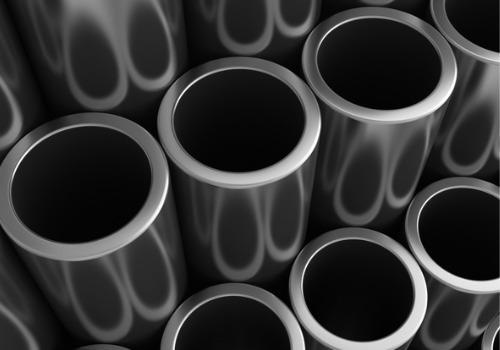As can be said of other segments within the industry of metalworking, the technology involved in grinding machine development has vastly improved over time.
This is in part due to the drive to meet industry trends, which include an increased demand for high-precision parts, the use of new advanced materials, a salient shortage of skilled machine operators as well as the need for 24/7 operations.

Image Credit: Hardinge Inc.
In response to this, over the years, grinding machines have become more sophisticated and flexible, incorporating automation and ‘smart’ features like software controls, IoT support, remote monitoring and multiple other functions into single-machine platforms.
As a good example of this, the majority of grinders that are on the market today offer increased accuracy and efficiency by including CNC as standard.
Modern grinding machines can produce high-precision components from a range of substances, thanks to the right features and set-up, which can include materials with significant heat resistance and hard-to-abrade materials.
High-Precision Parts with Cylindrical ID/OD Grinding
Machines used for cylindrical grinding are a backbone in most metalworking shops. Cylindrical grinding is the name given to the process used to finish off the outside or inside diameter of a cylindrical part.
During the process of cylindrical grinding, both the grinding wheel and the workpiece are in constant rotation, as the grinding wheel is fed towards and away from the piece.
These machines are highly flexible, and as long as they have a central axis of rotation, they can work on objects with various shapes, sizes and diameters.
There is a wide range of cylindrical grinders, which are single-purpose, single operation cylindrical grinders – including those which are OD (outside diameter) or those which are ID (inside diameter). The former of these - OD grinders - work on an object’s external surface as it is rotated between the centers.
The latter, ID grinding, sees small amounts of material being removed from a part in order to finish off its inner surface.
The ID grinding wheel and its object rotate in opposite directions, similarly to OD grinding, which results in reversed directional contact of the surfaces (where the grinding occurs).
As a result of this similarity, many grinders available today combine ID and OD grinding (along with other grinding functions if possible) onto a single machine, which naturally increases both its versatility and its range of practical applications. It must be noted, however, that single-purpose OD or ID machines are still sold.
Thanks to their ability to produce parts with high-quality surface finishes and excellent accuracy, ID/OD grinding machines are often considered to be an irreplaceable option for extremely precise grinding applications (such as bearing and hydraulic components).
This is in part also thanks to their ability to produce parts with excellent accuracy and high-quality surface finishes. ID/OD grinding machines are also able to meet the very tight tolerances required by industries like automotive, aerospace and defense.
Industrial ID/OD Grinding Trends
ID/OD grinders have modernized along with the development of metalworking shops, facilitating rapid parts production and machine set-up; the grinders become easier to configure and operate as there are fewer skilled operators available, with fewer steps involved today than ever before.
These updates have even extended to grinding wheels, which now boast new bonds and super-abrasives that can remove material faster than ever before and handle particularly tough-to-cut metals. Today, grinders have had to become more rigid, powerful and capable in order to safely navigate such complex applications.
New controls and dressing processes and sensor monitoring processes are just some of the advanced features of the latest ID/OD grinders. The grinders also boast multiple functions, including universal cylindrical, face and polygon grinding.
The automation and intelligence of software seen elsewhere have also found their way into grinders, saving time and improving performance.
One example of this is the advances that have taken place in grinding software, which has become better at calculating and offering process parameters. This means that parts can be produced consistently over and over, with the desired accuracies and surface finishes.
Machine capabilities like this not only produce more consistently high-quality parts but also shorten set-up time, supporting high-volume production applications and improving machine usability.
Hardinge – Leading the World in Internal/External Grinding
Hardinge is a market leader offering high-tech grinding solutions, in addition to designing and building turning centers and collets. The latest additions to Hardinge’s offering include KELLENBERGER, HAUSER, TSCHUDIN, USACH, VOUMARD®, along with other brands.
The Voumard line of innovative, high productivity cylindrical ID/OD grinding machines has been designed for flexible internal/ external grinding operations and can process workpieces of almost every geometry – as well as perform multiple grinding operations - in a single clamping.
The Voumard range has been designed to address numerous manufacturing requirements and industries. These industries range from aerospace to automotive, from bearing to tooling and such precise applications as spindle manufacturing.
These Voumard systems are used worldwide to create various parts in multi-product batches (like diesel common rail and hydraulics-pneumatics components) or those with low quantities (like high precision bearings and machine spindles components).
The Voumard VM 150 series offers a multi-purpose and compact ID/OD grinding solution, which is universal and therefore an ideal choice for producing medium-sized to larger workpieces. This versatility means this is true of both small batch and volume production environments.
The Voumard line is due to expand soon, offering a new standard-setting ID grinding machine, which will be universal as well as production grinding. The new Voumard line expansion will feature a unique design, offering more flexible machining possibilities and less retooling.

This information has been sourced, reviewed and adapted from materials provided by Hardinge Inc.
For more information on this source, please visit Hardinge Inc.